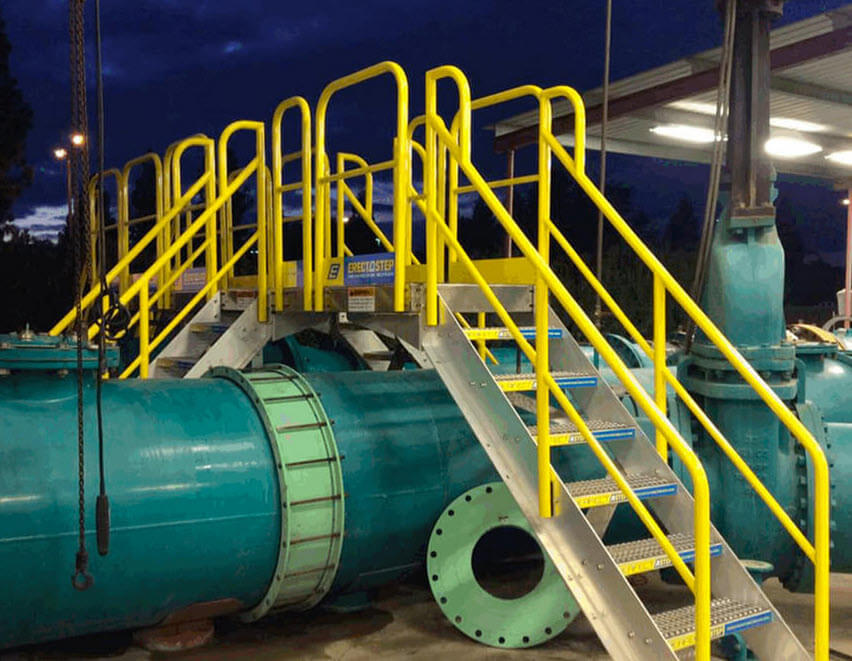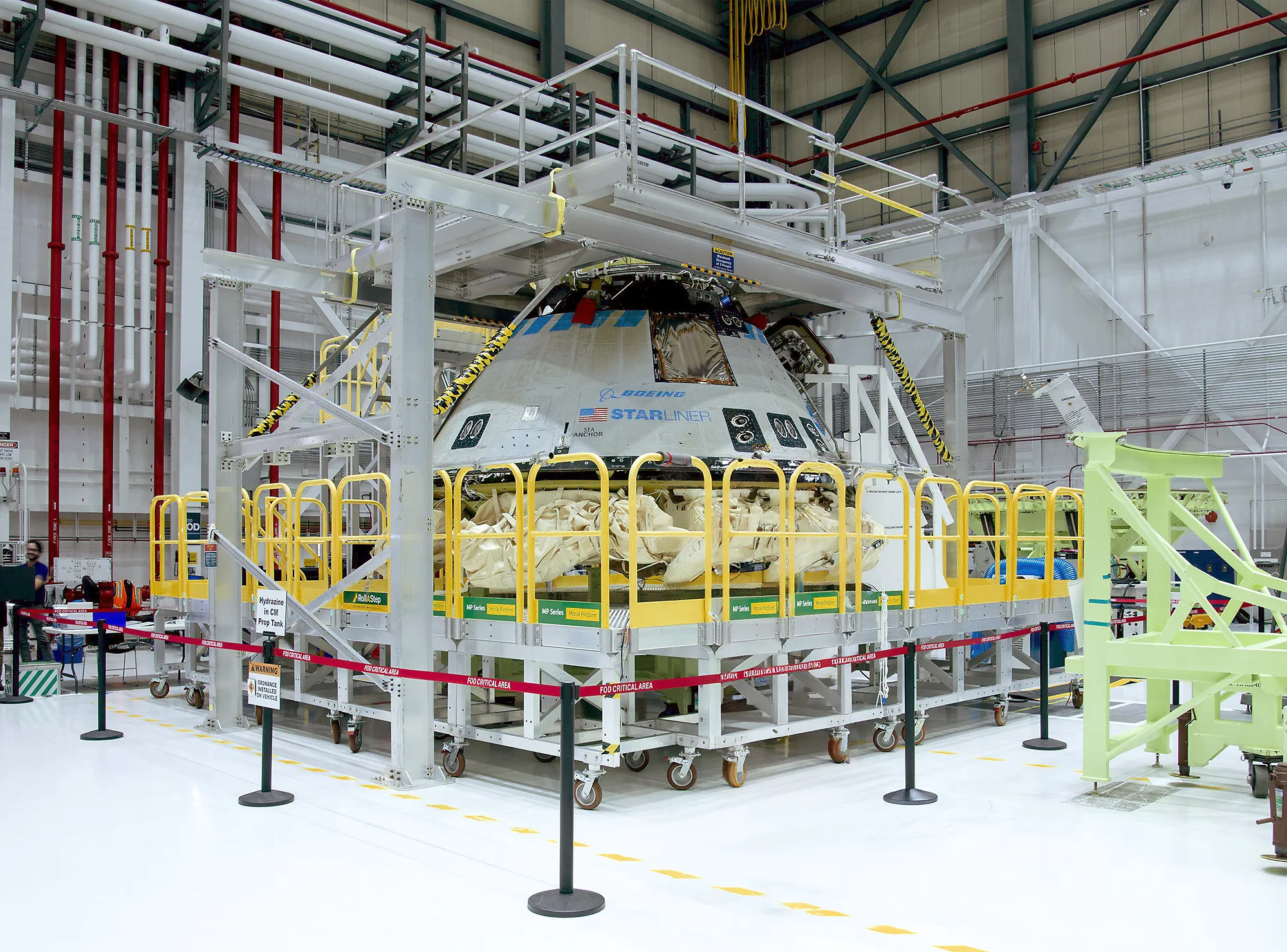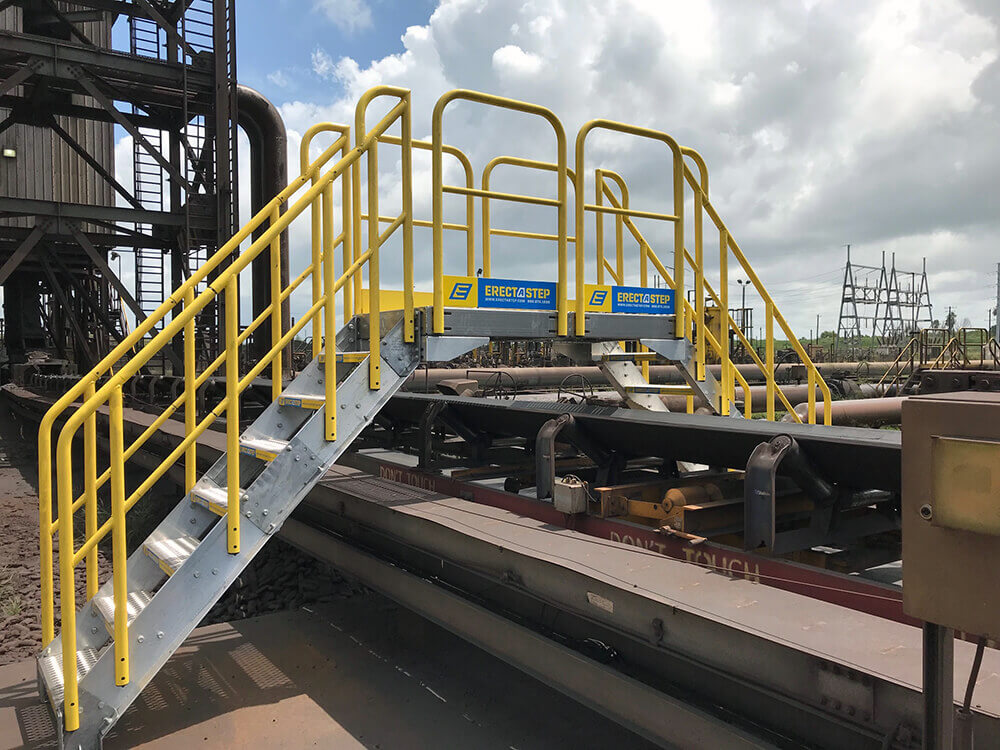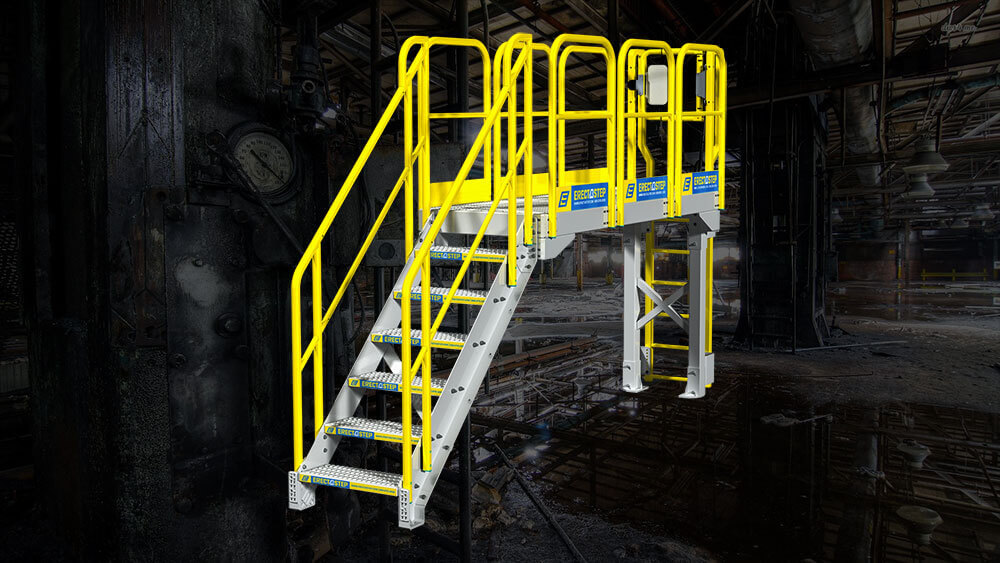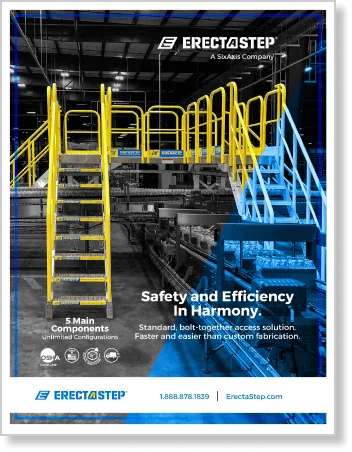It’s not uncommon for essential areas of busy facilities to be separated inconveniently by large pipes, or for control panels and maintenance areas to be obstructed by machinery. Although these scenarios are typical, they are certainly not strategic in operating a safe and efficient business. Obstacles hinder movement posing significant safety risks for workers while impacting the profitability of your operation. This is precisely where crossover stairs become indispensable, enabling employees to navigate over obstructions safely and efficiently.
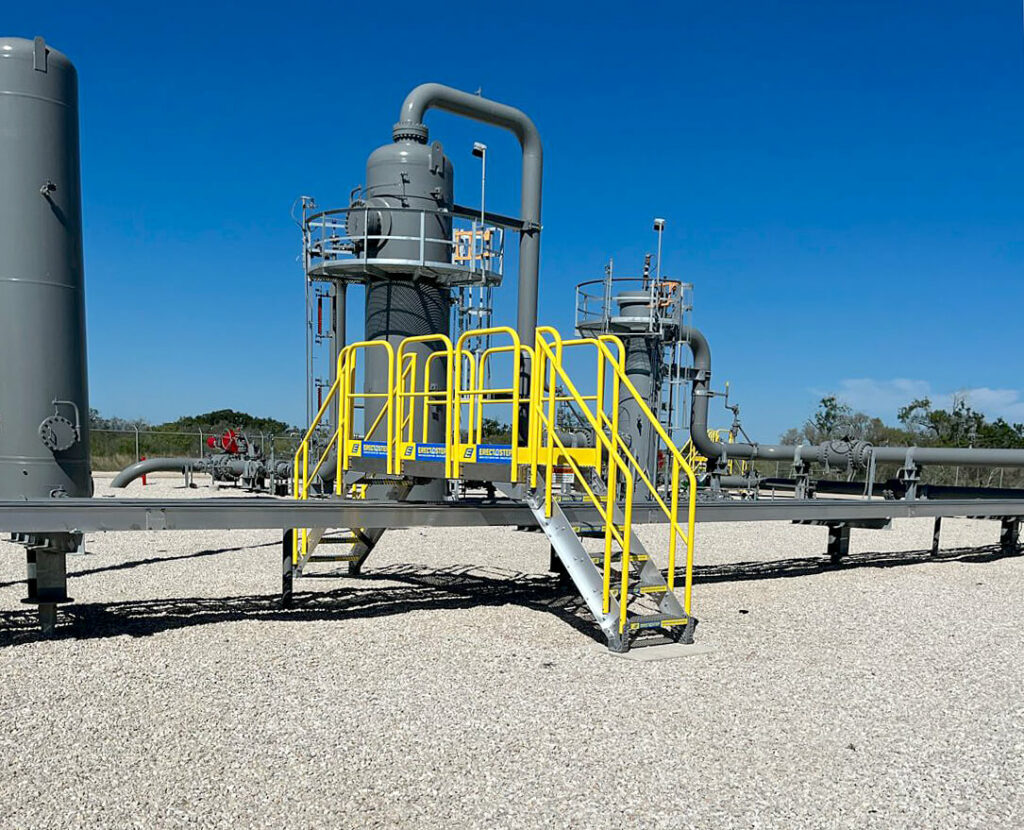
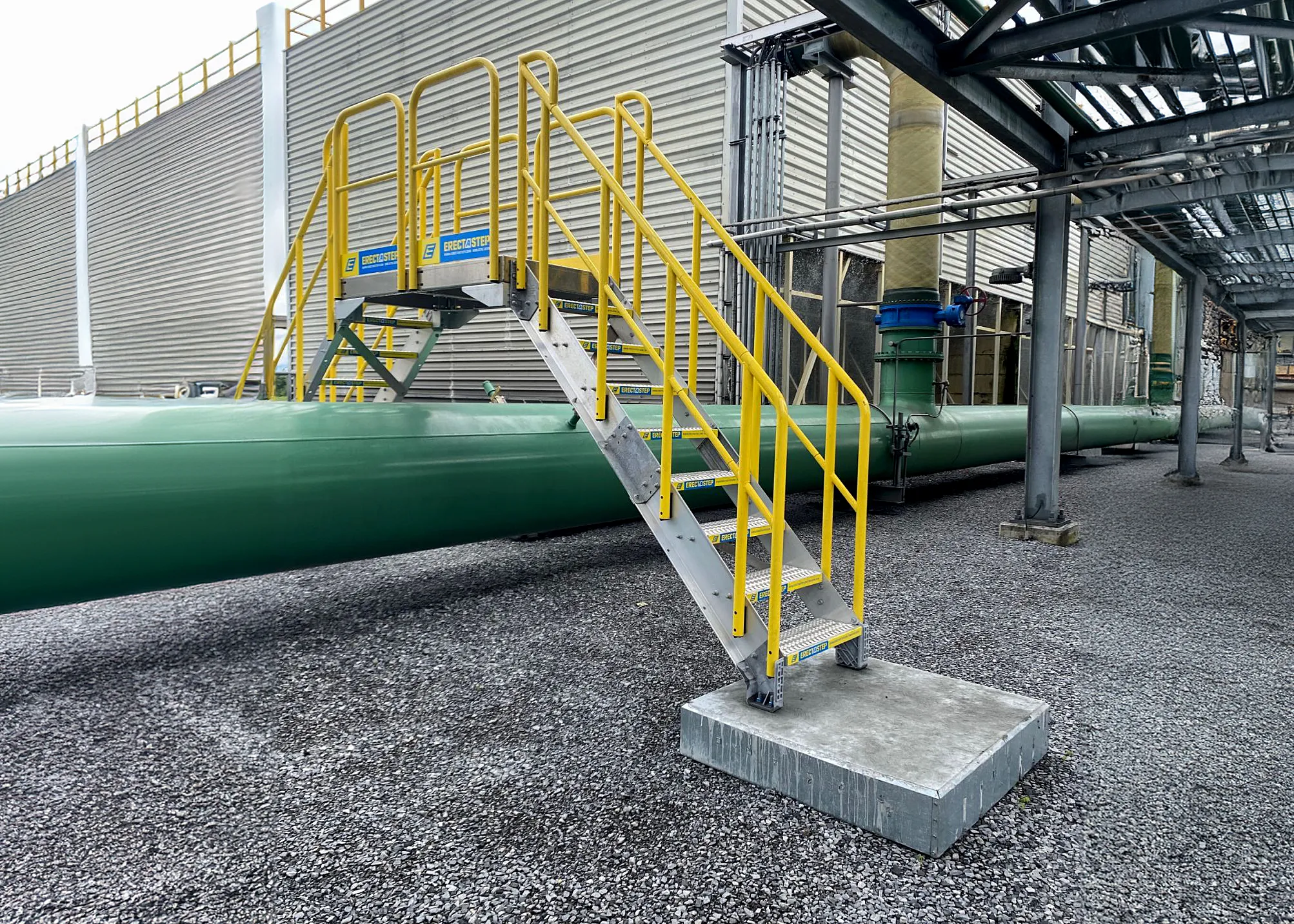
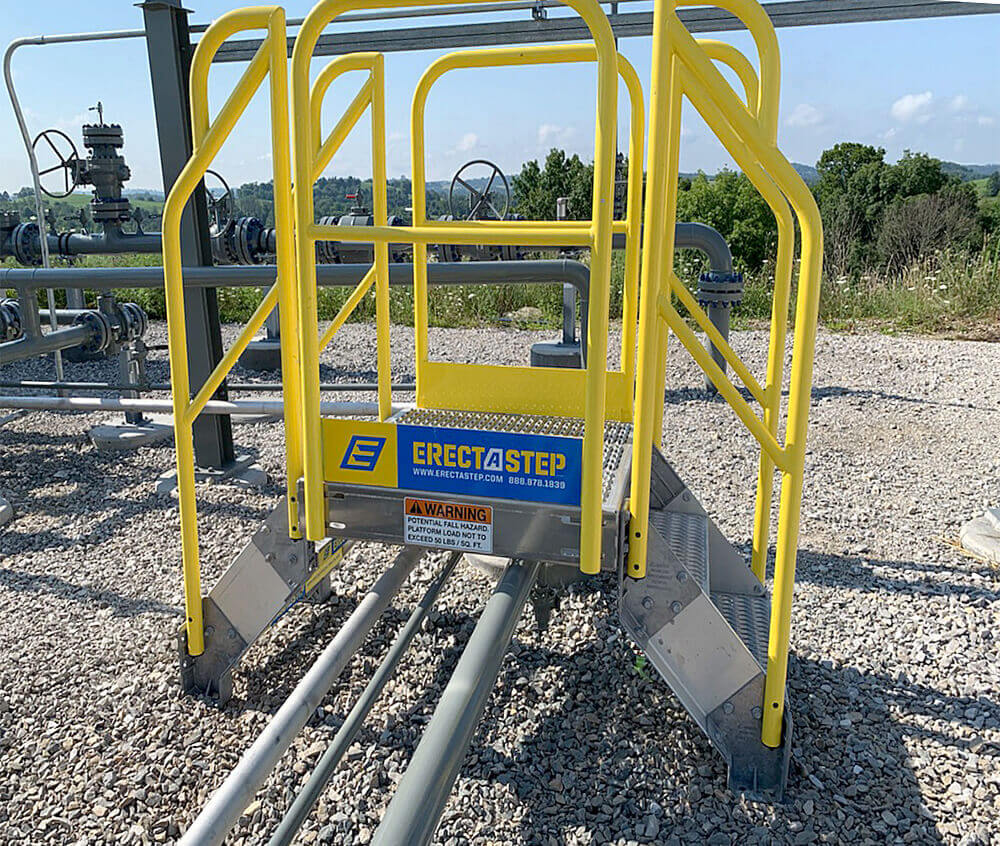
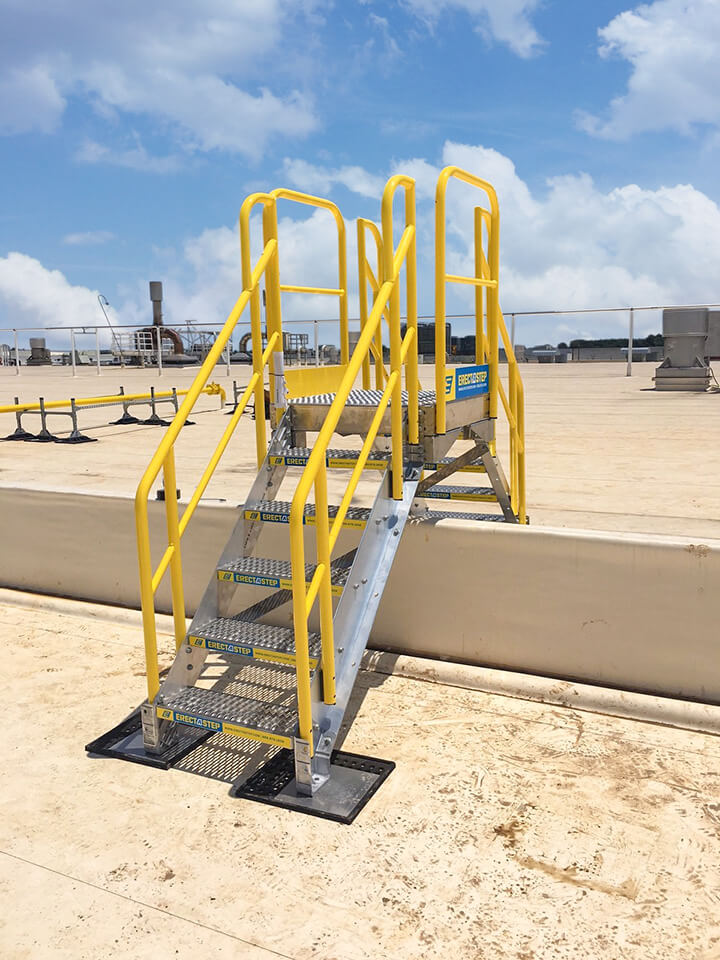
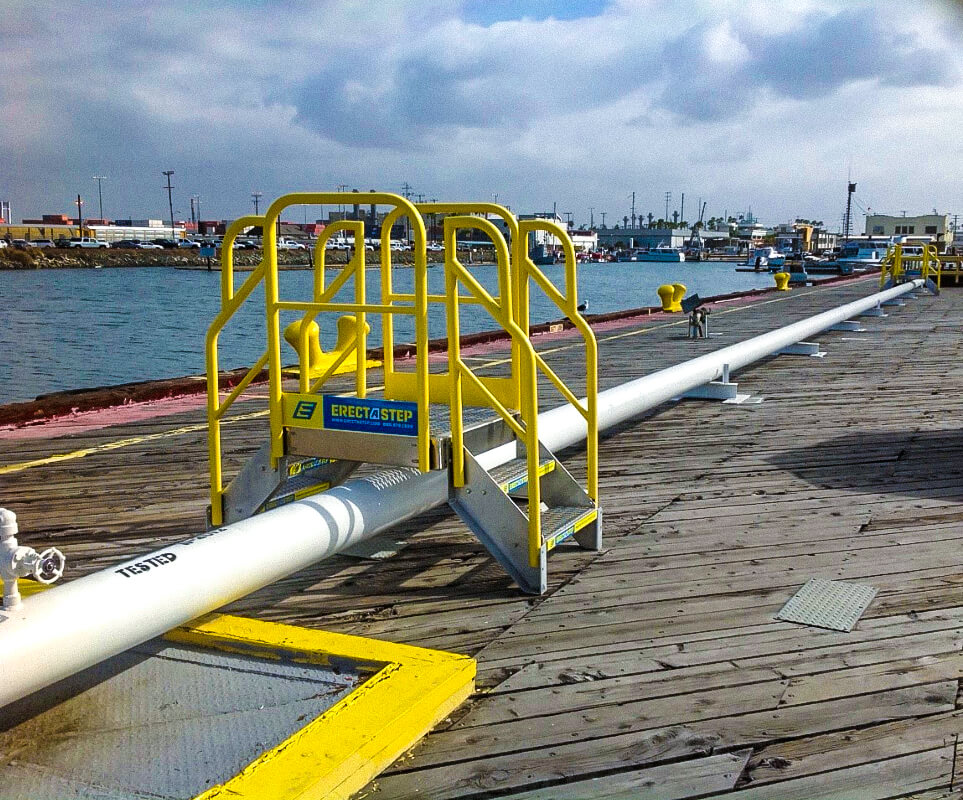
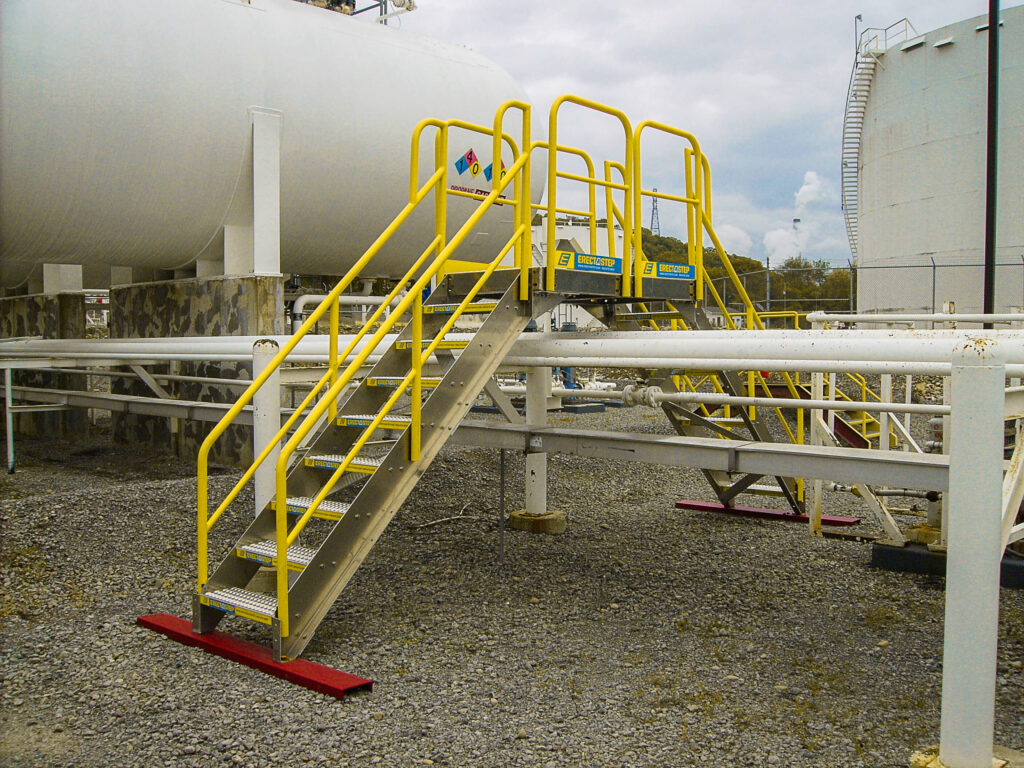
Selecting the Right Crossover Stairs
When choosing a crossover stair, consider the obstacle’s dimensions. The height and length of the clearance are critical factors that will influence your choice. For accurate clearance height, calculate considering the highest point any vehicle might reach, plus the maximum height the crossover must clear. For clearance length, measure the widest point that needs to be spanned.
Despite their practical function, crossovers still require an OSHA-compliant design to ensure workplace safety. Also, consider the space needed for safe ingress and egress when installing the crossover. In compact spaces, a space-saving model with steeper ladders might be the best fit, ensuring functionality without sacrificing valuable area.
Custom Solutions and Material Choices
For facilities where standard units do not suffice, consider custom configurations like U-shaped, S-shaped, or Z-shaped crossovers. Material choice is another crucial consideration. ErectaStep crossovers are available in stainless steel, aluminum, and painted steel. Each material offers different benefits: aluminum is excellent for outdoor installations due to its anti-corrosion properties; stainless steel is ideal for food service areas; and painted steel is a cost-effective option.
Safety and Durability
Finally, assess the tread surface based on your specific environmental conditions. A more robust tread is advisable in areas prone to wet or slippery conditions. For crossovers situated over conveyor systems, treadless options are recommended to ensure stability and safety.
